Septic Installation

Septic System Installation Services
We make septic system installation simple and stress-free. From the very first test hole to creating a custom design that fits your property perfectly, we handle it all. We’ll take care of scheduling and coordinating with the health department for inspections, so you don’t have to worry about a thing. Our goal is to keep everything running smoothly, with clear communication and expert service from start to finish—making sure your system is set up right.
How The Process Works
The first step in our septic installation process is digging a test hole and collecting a soil sample to determine what type of system will work best for your property. From there, we complete the septic permit application and detailed system drawing, submitting everything to the city while ensuring full compliance with the Ontario Building Code. Once the permit is approved, we’re ready to move forward with the installation. We always work closely with the homeowner to choose the best location for the septic bed and make sure the final project layout fits your vision and property needs.
We believe in transparency and making sure you’re fully informed every step of the way. You can count on us to walk you through each phase of the installation, answer your questions, and keep you updated throughout the process. Our goal is to make your new septic installation as smooth and stress-free as possible
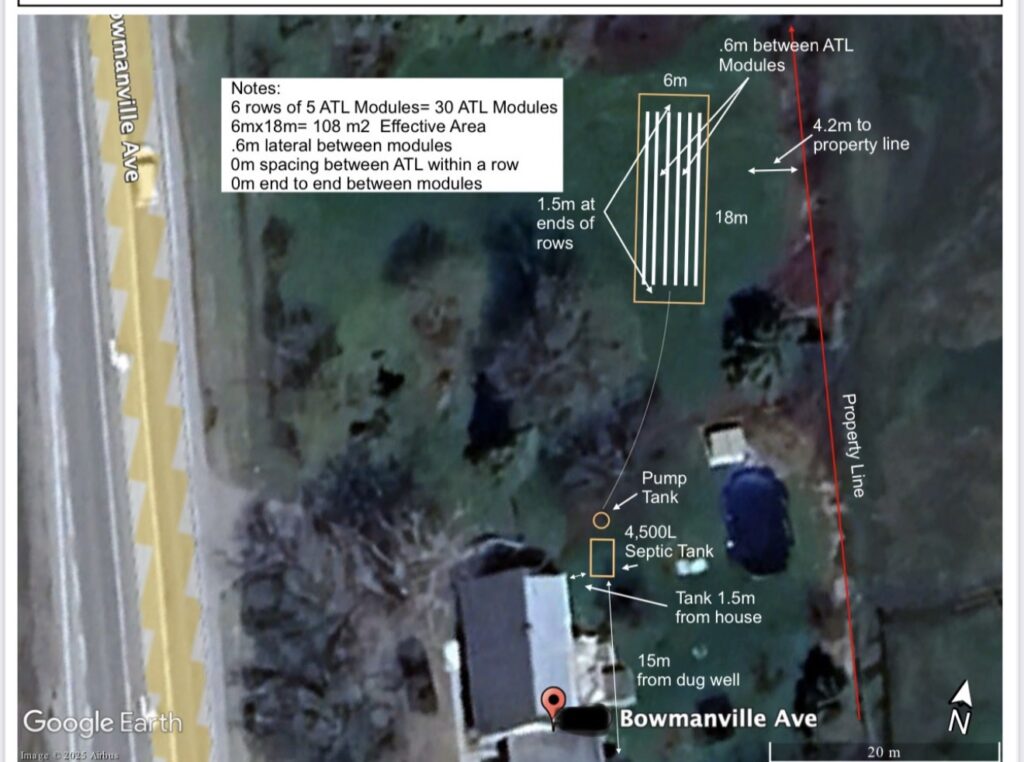
What yypes of septic system will I need?
When it comes to septic systems, there’s no one-size-fits-all solution—and at Clarington Septic Repairs, we understand that. We offer a range of system options to suit the unique needs of each property and homeowner.
From traditional filter beds and trench systems to advanced treatment solutions like the Eljen Septic System, Enviro-Septic, and ATL System, we have the expertise to design and install them all. Property size, setbacks, soil type, water table, and house size all play a critical role in determining which system is the right fit. Each option treats and distributes wastewater differently, so choosing the right one ensures long-term functionality and compliance.
We’ll work closely with you to evaluate your property and recommend the best system to meet both regulatory requirements and your individual needs.
Filter Bed
A filter bed system is a reliable and time-tested method for treating wastewater in septic systems. It uses a layer of filter sand that effectively removes impurities from the effluent. This sand works in combination with either infiltrators or a stone and pipe network to evenly distribute the treated water into the surrounding soil.
As the wastewater continues to percolate through the soil, it undergoes additional natural filtration, helping to eliminate harmful contaminants. Known for their dependability and relatively simple maintenance, filter bed systems are a great fit for many properties.
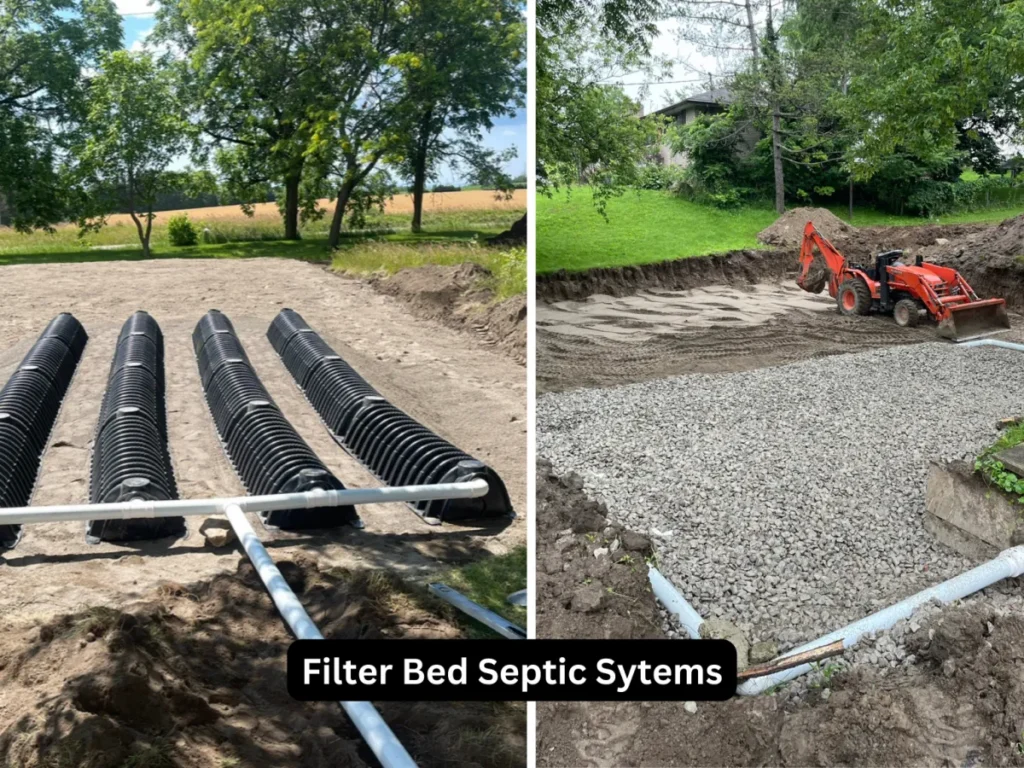
Trench System
A trench system is a septic solution best suited for properties with ample space and favourable soil conditions. This method involves digging long, narrow trenches that are filled with gravel and perforated pipes. Wastewater from your home flows into these trenches, where it is evenly distributed and gradually filtered through the surrounding soil.
Because of the space and excavation requirements, trench systems are typically ideal for larger lots. Since the soil plays a key role in further treating the effluent, this system may not be suitable for properties with poor drainage or compacted soils.
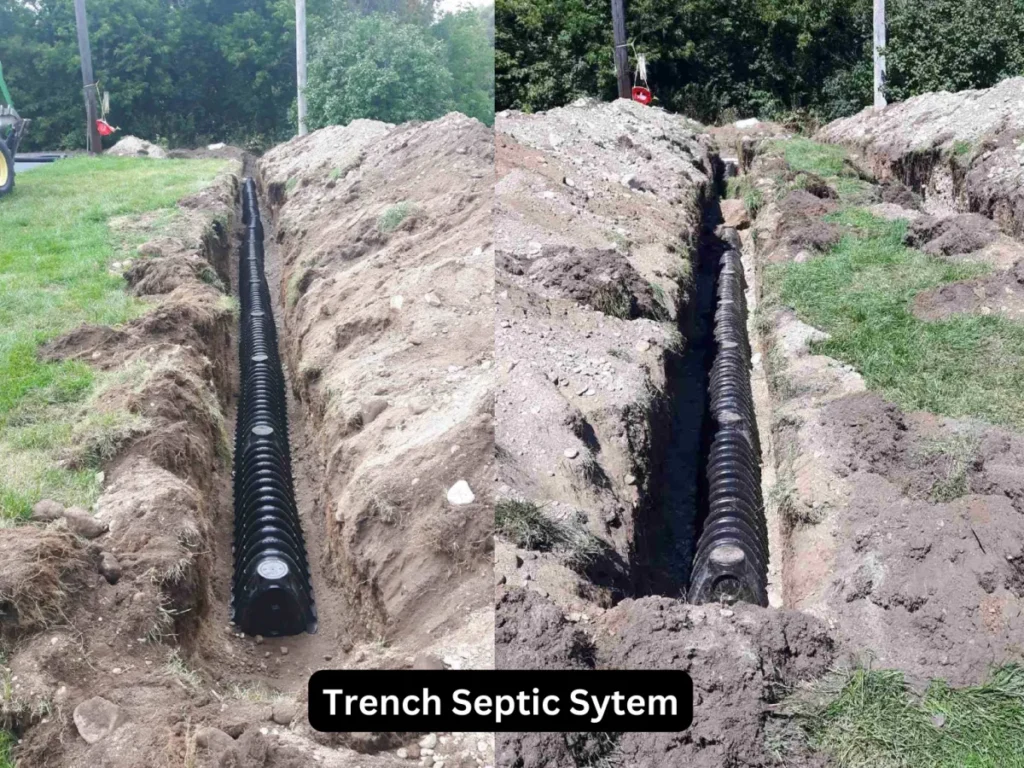
Eljen Septic System
The Eljen Septic System is an innovative, eco-friendly solution for wastewater treatment. It uses a series of patented filter modules made from recycled materials, offering an efficient and sustainable way to treat septic effluent.
This system enhances natural treatment by creating aerobic conditions that support the growth of beneficial microorganisms to break down pollutants. Its compact design reduces space requirements, making it an excellent choice for smaller properties or those with limited layout options. Eljen systems are also commonly used on properties with a high water table, where traditional systems may not be suitable.

Enviro-Septic System
Enviro-Septic Systems represent a cutting-edge advancement in onsite wastewater treatment. They use a passive, gravity-driven process to effectively break down pollutants in septic effluent. One of their most impressive features is the way treatment continues and improves as the effluent moves through the surrounding soil.
These systems work much like the Eljen Septic System, but in a different shape and configuration. Both rely on aerobic conditions and passive treatment, but Enviro-Septic uses a modular, pipe-like design rather than filter panels. The system is eco-friendly, requiring no electricity or mechanical parts, and provides a higher level of treatment than traditional systems. Its flexible design makes it ideal for various property sizes and soil types, offering homeowners a reliable, cost-effective, and environmentally responsible solution.
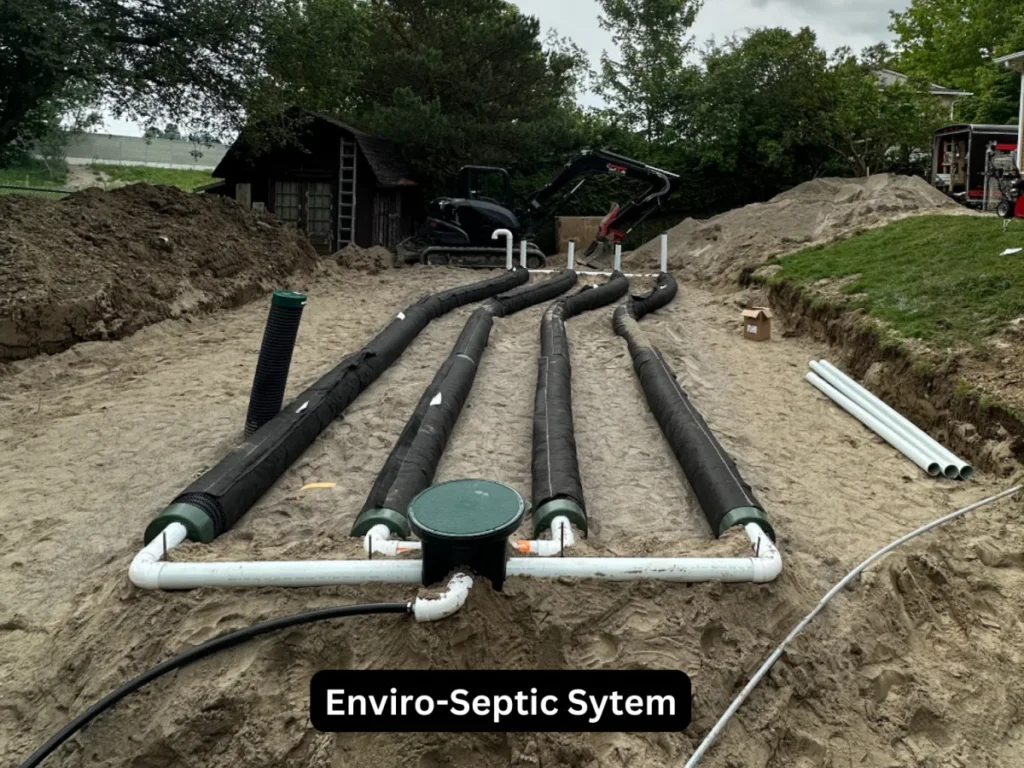
ATL Septic System
The ATL (Advanced Treatment Leachfield) Septic System is a revolutionary approach to onsite wastewater treatment. It’s designed to deliver a high level of treatment, making it ideal for properties where traditional systems may not be suitable due to soil conditions, limited space, or regulatory requirements. ATL systems combine primary treatment, aeration, and advanced filtration in one efficient process.
Much like the Eljen and Enviro-Septic systems, the ATL system treats effluent as it moves through a filtration layer and into the soil, relying on natural biological processes to break down contaminants. This results in exceptionally clean effluent, helping to protect the environment and minimize impact on surrounding ecosystems. Its modular design and flexibility make ATL systems a great fit for a wide range of property sizes and site conditions, offering homeowners a reliable, compact, and eco-friendly solution.
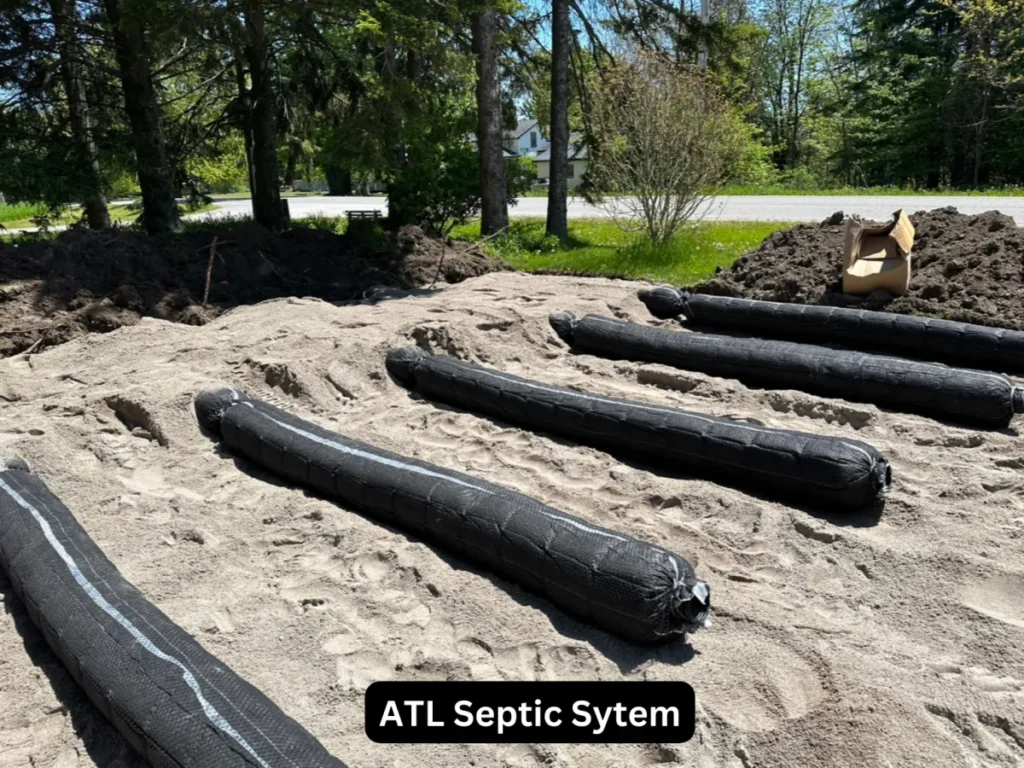
Types Of Septic Tanks
We offer two primary types of septic tanks to our customers: concrete and plastic. Concrete septic tanks are valued for their strength and long-term reliability. Built to last, they’re an excellent choice for homeowners looking for a durable, time-tested solution.
Plastic septic tanks, on the other hand, are lightweight, easy to install, and resistant to corrosion. They’re ideal for properties with limited access or soil conditions where a concrete tank may not be practical. We recognize that every property is different, and we help our customers choose the right tank based on site conditions, access, and personal preferences.
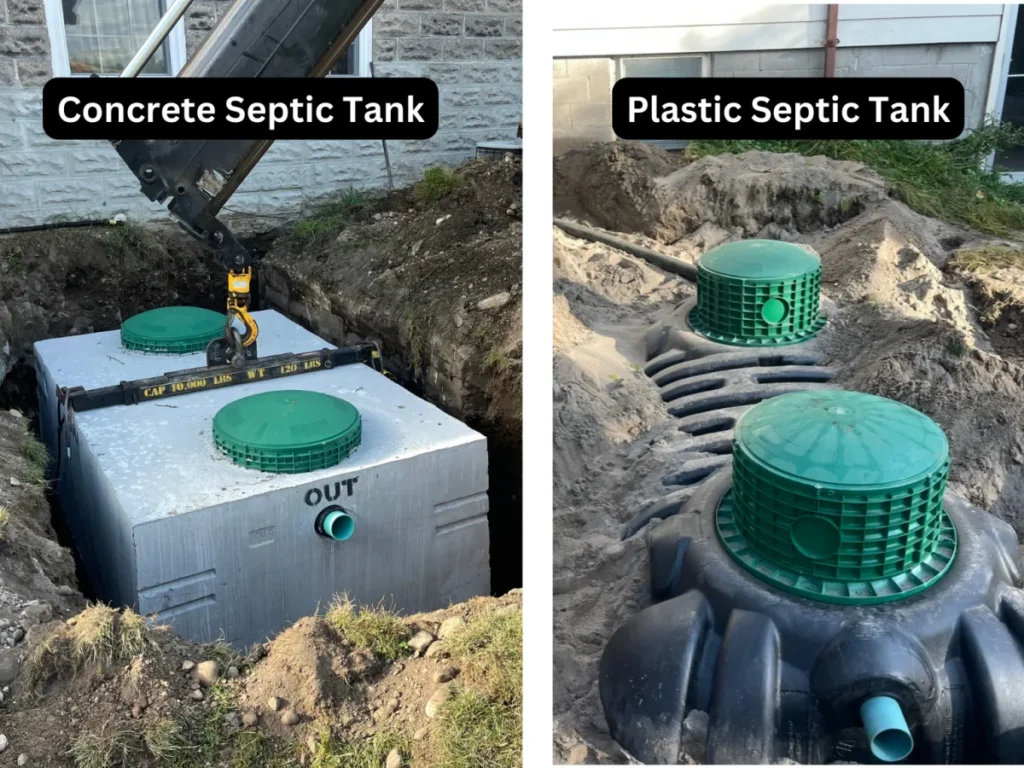
Septic System Specialists
We’re septic system specialists—and while your septic system might be the least sexy part of your home, it’s definitely one of the most important. You don’t think about it until something goes wrong, and that’s where we come in. From inspections to repairs and full system replacements, we make sure everything runs smoothly underground so you don’t have to worry. Trust us to handle the dirty work and keep your system in top shape.
How long does it take to install a system?
Installing a septic system typically takes about a week from start to finish. However, we like to give ourselves a two-week window to allow for any delays due to weather or health department inspections. Throughout the process, we do our best to keep you informed and involved so everything runs as smoothly as possible. A common question we get is whether the homeowners need to move out during installation—and the answer is no. We simply pump out the existing septic tank before we begin, and the household can continue using the plumbing as usual while the new bed is being installed, using the tank as a temporary holding system.


